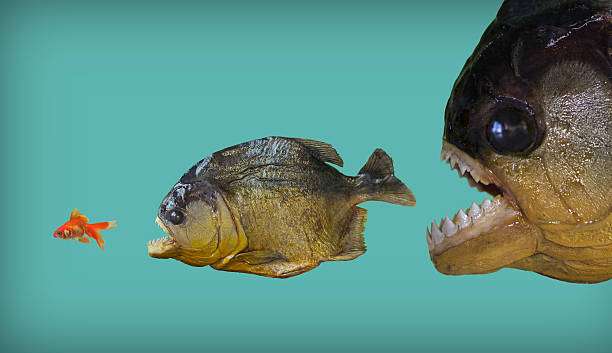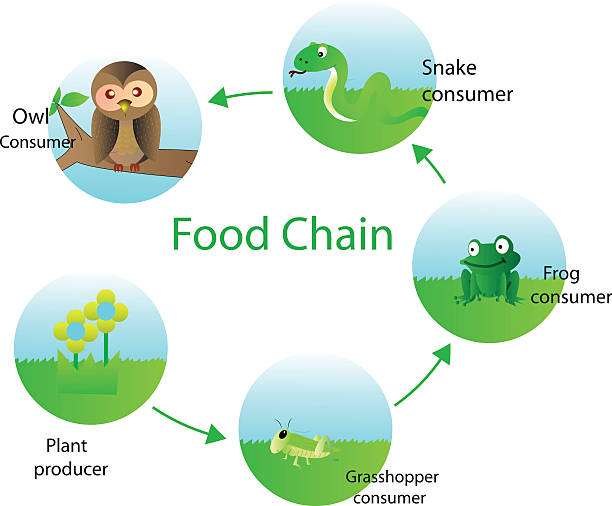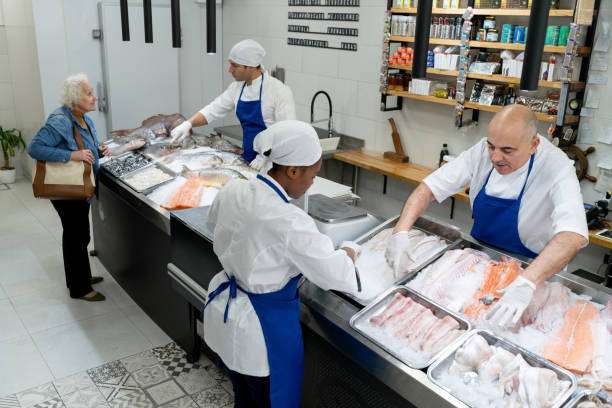Why Is the Food Chain So Popular?

August 28, 2023
Understanding Nature's Balance: The food chain illustrates the intricate relationships between different species in an ecosystem and highlights the interdependence of life forms. It helps us comprehend how energy and nutrients flow through various organisms, ultimately showcasing the delicate balance that sustains life on Earth.
Simplicity and Clarity: The food chain provides a simplified representation of complex ecological interactions. It categorizes organisms into distinct trophic levels (such as producers, primary consumers, secondary consumers, etc.), making it easier for people to grasp the basics of ecosystem dynamics.

Educational Tool: The food chain is commonly used as an educational tool to teach students, children, and the general public about ecological concepts, the flow of energy, and the roles of different organisms in an ecosystem. It's an accessible way to introduce scientific concepts related to biology and ecology.
Environmental Awareness: By understanding the interconnectedness of species in an ecosystem, individuals become more aware of the impact of human activities on the environment. This can lead to increased awareness and concern for conservation efforts, sustainable practices, and biodiversity preservation.
Storytelling and Analogies: The food chain often serves as a metaphor in various contexts. It can be used to explain concepts like business dynamics (e.g., supply chain), social hierarchies, and even human relationships.
Scientific Research and Conservation: Ecologists and scientists use the concept of the food chain to study ecosystems, track changes in populations, and predict how disturbances or changes in one species can affect others. This research contributes to the understanding of ecological dynamics and informs conservation strategies.
Cultural Significance: The food chain concept has cultural and philosophical significance. It has been used in literature, art, and religious contexts to explore themes of life, death, and the interconnectedness of all living beings.

The Food Chain and the webs: A Comprehensive Guide
Food Chain:
A food chain is a linear representation of the flow of energy and nutrients through a sequence of organisms in an ecosystem. It illustrates who eats whom and how energy is transferred from one trophic level to another. A basic food chain consists of three main trophic levels:
Producers (Autotrophs): These are organisms that produce their own food through photosynthesis or chemosynthesis. They are typically plants or certain types of bacteria. Producers convert sunlight, water, and carbon dioxide into energy-rich compounds like glucose.
Primary Consumers (Herbivores): Primary consumers are herbivores that feed directly on producers. They are animals that consume plants or algae for their energy and nutrients.
Secondary Consumers (Carnivores): Secondary consumers are carnivores that prey on primary consumers. They obtain energy by consuming other animals.
Example of a Simple Food Chain: Grass (Producer) -> Grasshopper (Primary Consumer) -> Frog (Secondary Consumer) -> Snake (Tertiary Consumer)
Food Web:
While a food chain represents a linear relationship, ecosystems are much more complex, and many interconnected food chains make up a food web. A food web is a network of interconnected food chains that illustrates the feeding relationships and energy flow in an ecosystem. In a food web, organisms can occupy multiple trophic levels and have multiple sources of food.

Benefits of Food Webs:
Reflect the complexity of real ecosystems better than simple food chains.
Show the interdependence of species and the potential impact of changes in one population on others.
Account for the presence of omnivores (organisms that eat both plants and animals) and detritivores (organisms that feed on decaying matter).
Allow for a more accurate understanding of energy flow and nutrient cycling.
Example of a Food Web:
Plants (Producers) -> Herbivores (Primary Consumers) -> Carnivores (Secondary Consumers) -> Top Predators (Tertiary Consumers)
The web might also include detritivores that feed on dead organisms and decomposers that break down organic matter into nutrients for producers.
Trophic Levels:
Trophic levels represent the different positions that organisms occupy in a food chain or food web, based on their feeding relationships and energy sources. They include:
Energy Flow:
Energy flows through an ecosystem as organisms are consumed and metabolized. However, energy is not efficiently transferred from one trophic level to the next. As organisms use energy for their metabolic processes, heat is released and lost from the ecosystem. This phenomenon is known as the "10% rule," where only about 10% of the energy from one trophic level is transferred to the next. This limits the number of trophic levels that can be sustained in an ecosystem.
Conclusion:
Understanding food chains and food webs is essential for comprehending the complexity of ecosystems, ecological interactions, and energy flow within natural systems. These concepts play a crucial role in ecology, environmental science, and our broader understanding of the interconnectedness of life on Earth.
Summary
The food chain is a popular tool for understanding the intricate relationships between different species in an ecosystem. It categorizes organisms into distinct trophic levels, making it easier for people to grasp the basics of ecosystem dynamics. The food chain also serves as an educational tool to teach students, children, and the general public about ecological concepts.
Big congrats to Max Verstappen on his epic win at the Dutch Grand Prix and hats off to all the drivers who bravely navigated those tricky weather conditions! As we revel in the thrill and excitement of this latest F1 race, it brings to mind some other high stakes, competitive activities... like choosing where to get your food! At Mitansh Gangani, we understand the global flavor race, a complex food chain that just like a Grand Prix, involves perfect timing, strategy and skill! Just like Verstappen, we are committed to delivering a winning experience every time! Hungry for more insights? Head over to our blog and get the scoop: [Why Is The Food Chain So Popular?](https://www.mitanshgangani.com) Connect with us, your satisfaction is our victory podium! Because at Mitansh Gangani, we don't just deliver food, we serve 100% Customer Happiness.
#MitanshGangani #FoodChain #CustomerHappiness #MaxVerstappen #F1DutchGP






